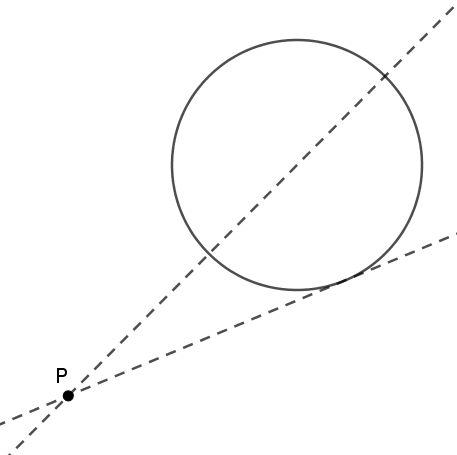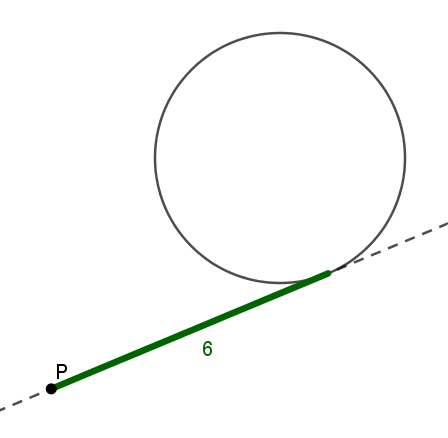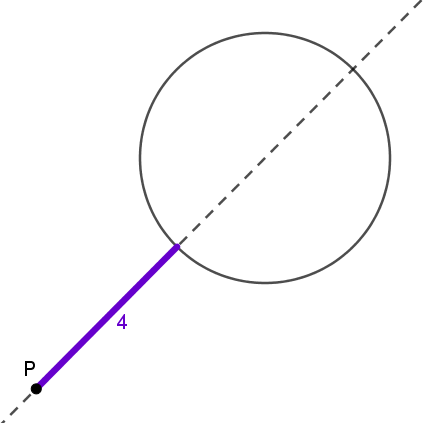Water Tower Math

- I could've measured the diameter if I got inside the tank. Not an option.
- If the top was flat, I could've measured the diameter from up there. Didn't want to.
- I could've paced out the circumference and divided by pi to find the diameter, but there were bushes growing too close around most of the tank.
* * * * * * * * * * * * * * * * * * * * * * * * * * * * * * * * * * * * * * * * * * * * * * * * * *
1. Mess around
Move the five points that you can move. Your goal is just to get a sense of how they affect the diagram. Have you done that?
2. First observations
Use the reset button if you need to. Make the circle pretty big, and put point P somewhere inside it. As you move point A, do you notice any relationships between the two numbers along line segment AB?
3. The Effect of Moving A or C
Leave the blue points where they are, but move A and/or C. What do you notice regarding the numbers in the new diagram?
4. The Effect of Moving P
Move P to a new location. What changes, and what stays the same? Explore with P inside, outside, or on the circle. (Can you make points A and B coincide?) (Notice that with P outside the circle, the two segments AP and BP overlap a little. One of the lines is dashed so that you can see both, even when they overlap.) Write some brief notes about what you discover.
5. Spoiler alert
Are you ready to see a summary of the pattern at play here?
* * * * * * * * * * * * * * * * * * * * * * * * * * * * * * * * * * * * * * * * * * * * * * * * * *

6. The product along one line
Suppose I walk along a tangent line. If it's 6 paces from my pack to the tower along this path, what is the value of the product, (near distance) times (far distance)? (See figure below.)
Figure: 6 paces to tower along a tangent line

7. The product along another line
Now suppose it's only 4 paces from my backpack to the nearest part of the tower, as shown below. Since the (near)(far) product is the same as before, how far is it to the opposite side?

8. Diameter
Using what you've figured out so far, what's the diameter of the tower?